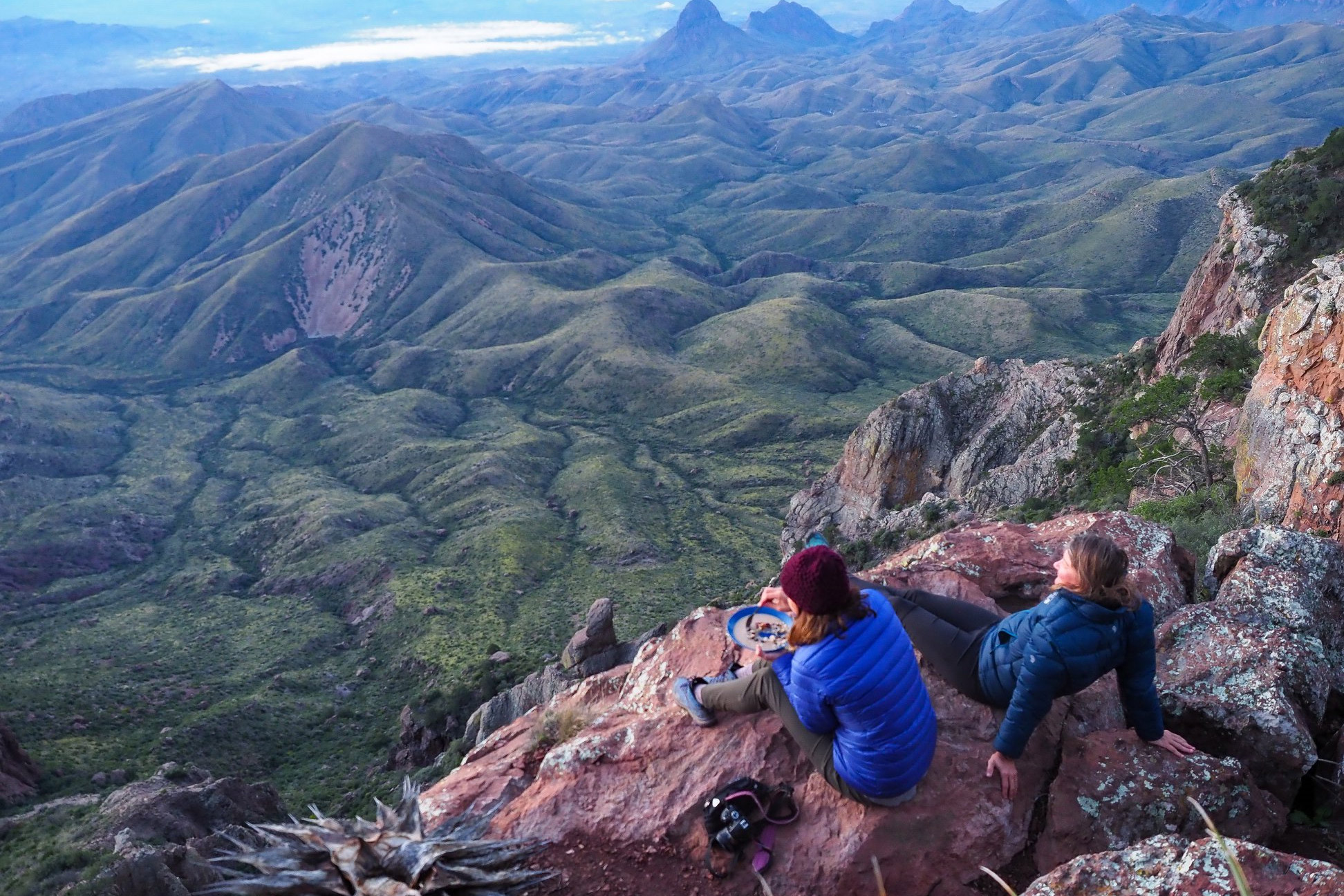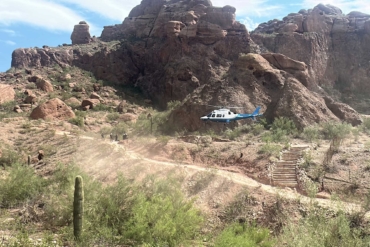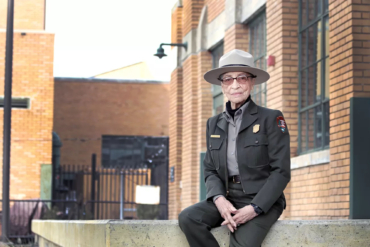The first time I camped at Big Bend Ranch State Park in prickly West Texas, I zipped open my tent flaps and came eye-to-eye with a tarantula. The spider slowly tiptoed away, like a soft black ping-pong ball with gangly pipe cleaner legs. With the wildlife out of the way, the full panorama came into focus: far-off mesas, hazy canyons, and rippling hills, all dusted with sand and bristling with cactus.
From the rugged mountains of West Texas to a floating campsite tucked in the coastal marshes, Texas is packed with prime spots to pitch a tent and go camping.
But unlike states like New Mexico and Colorado, where campers can boondock on huge swathes of public land, private entities own nearly 93% of Texas lands. You can still spend a night beneath those big, starry Texas skies — you just have to know where to go and plot ahead.
We’ve put together a guide to some of the best camping in Texas — state parks, National Parks, and more — to help you plan a trip to the Lone Star State. Diverse terrain, prickly plants, and yes, the occasional palm-sized arachnid, are all part of the reward.
The Best Camping in Texas
Sea Rim State Park, Texas
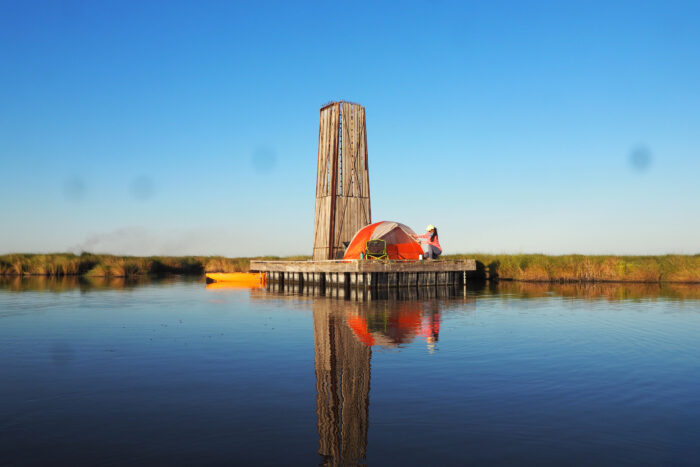
Pack a portable 5-gallon waste bucket (or purchase one at park headquarters) when you book the one and only floating campsite at this state park. It’s on the Gulf of Mexico near Port Arthur in East Texas and offers some spectacular camping.
Architecture students from the University of Texas designed the 13-by-20-foot platform, located among swishing marsh grasses about 2 miles from a boat ramp on the inland side of the park.
It takes about an hour to paddle 2 miles through a channel to the site. When you’re close, you’ll see the wooden tower, which provides privacy for your poop bucket. There’s room for two tents. But, bring the bug spray — mosquitoes can be voracious. And keep an eye peeled for gators.
Sea Rim State Park also has 15 developed campsites with electricity, 75 more primitive campsites along the beach, and a cabin you can book for up to six people.
While you’re there you can fish, paddle along the coast, hike, or ride horses on winding trails and beachfront. There’s also Big Thicket National Preserve, the J.D. Murphree Wildlife Management Area, and the McFadden National Wildlife Refuge not far away.
Big Bend Ranch State Park, Texas
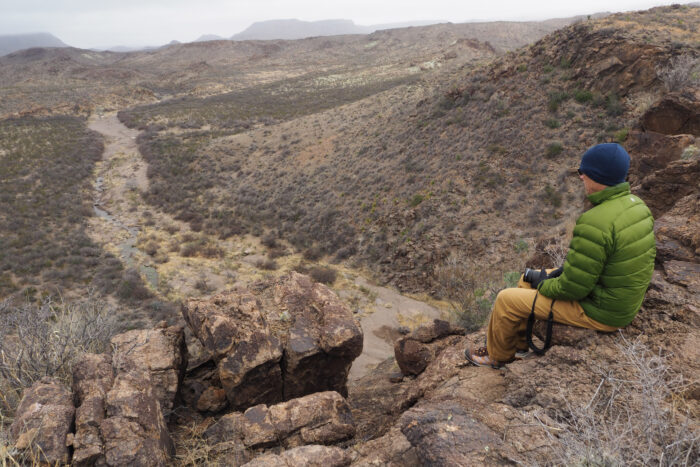
Don’t forget your mountain bike when you head to Big Bend Ranch, the 311,000-acre state park just to the west of Big Bend National Park. It’s rugged and remote and crisscrossed by 238 miles of multiuse trails. This is Texas’ largest state park and has some of the best camping in the state.
Pick up your camping permits, as well as hunting and fishing licenses at Barton Warnock Visitor Center on Ranch Road 170 (where you can access a series of single-track trails near Terlingua). Or pick those up at Fort Leaton. Then head to the park’s interior down a long and bumpy gravel road.
A favorite way to explore the park is via a multiday bike-packing trip. Or, travel by foot or horse. Depending on your route, you can see an old mining operation, a sparkling mound of white rock crystals, or ruins of an old wax factory.
There are 34 primitive campsites in the park, one primitive equestrian site, and single-bed lodging at the Sauceda Bunkhouse. Call ahead and make reservations (at 512-389-8900). Or go online to make Interior Reservations or River Reservations.
Our favorite campsite? The remote Guale Mesa II spot.
Avoid peak summer months, when temperatures soar over 110 degrees, and bring plenty of water. They don’t call this “The Other Side of Nowhere” for nothing.
Padre Island National Seashore, Texas

When you go camping in Texas, you can drive your rig right along the beach. And at Padre Island National Seashore you can pop up a tent or park a campervan anywhere you want along a 60-mile stretch of primitive shoreline.
This is the longest stretch of undeveloped barrier island in the world. You might spot a Roseate Spoonbill the color of Dubble Bubble chewing gum. Or, during the summer, you could stumble upon a nest of Kemp’s Ridley sea turtles. You can fish at Padre Island, kayak, and paddle board. Or go birding or waterfowl hunting. And the Laguna Madre is one of the saltiest bodies of water on Earth and at only 3 feet deep, it’s ripe for exploring by foot.
Just be prepared for the sand, which gets in everything.
There are five campgrounds in the park, two of which are developed and three of which are primitive. The developed campsites are Malaquite Campground, which features 48 sites open to tents and RV’s, and Bird Island Basin Campground, featuring another 34. Then, there are South Beach, North Beach, and Yarborough Pass primitive campgrounds, all of which are free to access.
All camping in Padre Island National Seashore is on a first-come, first-served basis.
LBJ National Grasslands, Texas
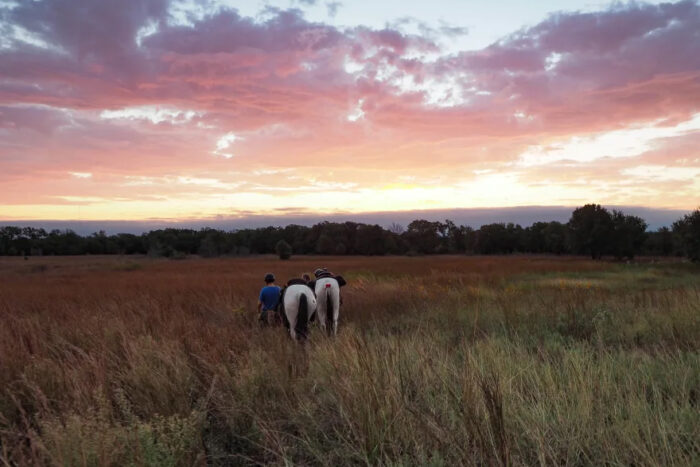
Walking through the fields of waving little bluestem at this 20,300-acre swath of public land northwest of Fort Worth feels a little like wading through an ocean of reddish gold. Native Americans once hunted bison and antelope here. Today grasshoppers spring out of the way as you walk through the knee-high vegetation.
Grab a slot in the Valley View Campground, where visitors can park RVs, pitch tents and access vault toilets, picnic tables, and a group pavilion. However, it is only available by reservation (call 940-627-5475) and only available on the weekends. You can also head to TADRA Point, a camping facility and a great jumping-off point for hiking trails. And finally, the Black Creek Lake recreation area has seven developed campsites you can book.
The park is popular with equestrians, who stage trail riding events here. And besides grassy meadows, you’ll find ponds, rolling hills, and clusters of swaying pines to wander amongst.
Note that there is no drinking water at these campgrounds. So come prepared with lots of water to stay hydrated. Camping in Texas is a thirsty business.
Martin Dies Jr. State Park, Texas
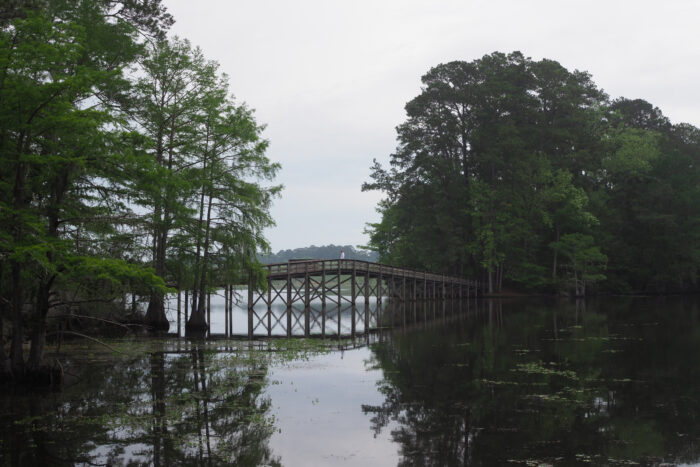
If you’re looking for camping with a slightly spooky atmosphere, consider this gem along the shore of 10,000-acre B.A. Steinhagen Lake in moss-draped East Texas. Martin Dies Jr. State Park is where the Neches and Angelina rivers confluence, creating a rich and biodiverse ecosystem.
Tall pines crowd the edges of tea-colored sloughs. And on foggy days (which are frequent), cypress trees seem to float on clouds. Try exploring by kayak or canoe (they’re available for rental or bring your own). And if you visit in spring, you can catch the creamy white flowers of blooming dogwood trees.
There are 10 trails and six points of interest to check out. Paddle, fish, and swim in the rivers, hike and bike on the trails, play volleyball, go hunting, or simply hang out and study nature.
Martin Dies Jr. State Park is home to over 200 campsites — most of which are on the water and feature electricity. You can also rent screened shelters, or cabins if you’d prefer to sleep under an actual roof.
Big Bend National Park
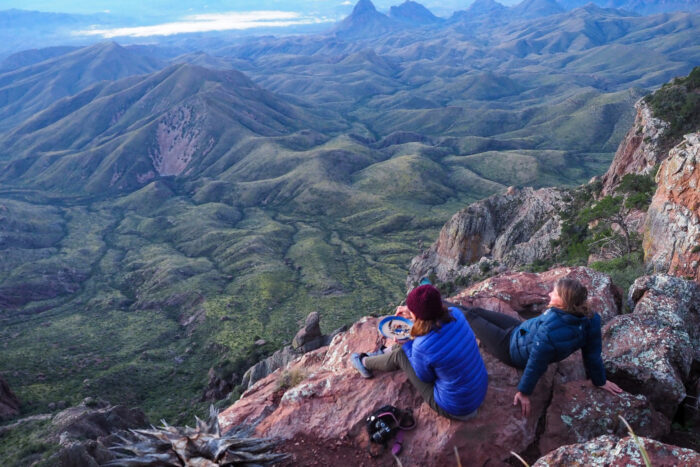
With four developed campgrounds and 116 backcountry sites, some of them scattered among huge boulders or near rocky chasms on the desert floor, and a whopping 801,163 acres of hardscrabble terrain to explore, Big Bend National Park serves up the quintessential Texas camping experience. It’s big.
The park hugs a curve in the Rio Grande, along the border with Mexico. Most visitors head to the Chisos Mountain Basin, which rises from the desert floor. It’s home to a growing population of black bears. From there, backpackers can follow the 12.6-mile South Rim Trail as it climbs 2,000 feet to the top of a “sky island.” You can also hike in the desert or by the river if the mountains aren’t your preference.
Hardy hikers can add a trip up to Emory Peak, at 7,825 feet, the highest point in the park. Or explore the ruins of a 1930s resort, where visitors once soaked in a rock-lined river tub heated by natural spring water. You can also hike in the desert or by the river if the mountains aren’t your preference.
Peak season is between November and April. Summers are blistering hot and dry, so if you plan on hiking, bring water, sunscreen, and clothing with SPF.
The four campgrounds in Big Bend National Park are Chisos Basin, Rio Grande Village, Cottonwood Campgrounds, and the Rio Grande Village RV park. There are also lots of options for camping outside of the park if the campgrounds within it are full.
Or, if you want to get into the backcountry and away from developed camping, there are ample opportunities for backpacking. Permits are required for all backcountry use. For Chisos backpacking and primitive roadside campsites, permits are available on www.recreation.gov. For primitive sites along Maverick Road and remote River Road and Old Ore Road are only available in person at park visitor centers.
Wood fires and ground fires are not allowed anywhere in the park and pets are not allowed on trails.
Hill Country State Natural Area
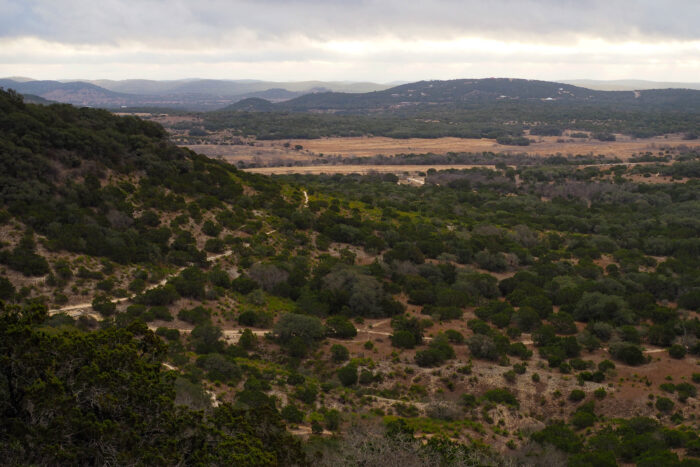
This 5,300-acre park just south of Bandera is dubbed the “Cowboy Capital of the World.” It was originally part of a Spanish land grant. The original landowner donated most of the ranch to the state in 1976, stipulating that it be used as a natural area where the public could ride horses.
Which is what it’s used for today. At Hill Country State Natural Area, you’ll find more than 40 miles of sometimes steep, rocky trails and wide-open meadows. There are more than 10 different trails (most under 4 miles long) and four scenic areas. All trails are designated multiuse for hikers, bikers, and horseback riders. In non-drought years, you can splash through creeks, too.
There are six different hike-in campsites: West Verde Creek, Comanche Bluff, Chaquita Falls, Butterfly Springs, Hermit’s Shack, and the Wilderness campsites. All of them feature vault toilets nearby but lack access to showers.
Visitors can also stay at the lodge which can accommodate horses, has a kitchen, and bathrooms, and sleeps nine. There are also several equestrian and group campsites.
Seminole Canyon State Park
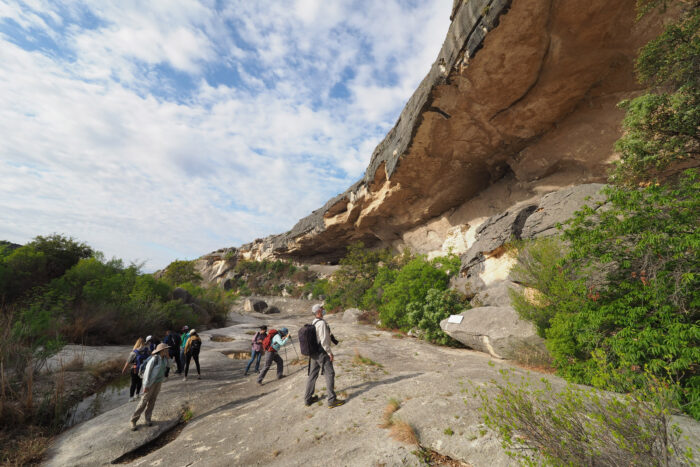
If you’re into history, book a site at this state park 40 miles west of Del Rio, near the Rio Grande. Here, ancient hunter-gatherers used paint made of crushed minerals, animal fat, and urine to create murals tucked into natural rock shelters. The developed campground is small and basic. But it offers beautiful, if sometimes hazy, vistas into the endless gray-green desert.
The Canyon Rim Trail winds for 4.5 miles along the rims of Seminole Canyon and the Rio Grande corridor. Or try the 2.5-mile Rio Grande Trail that leads to an overlook of the confluence of Seminole Canyon and the Rio Grande.
But to see the murals you’ll have to take a ranger-led guided tour. Researchers say the pictographs at Fate Bell Shelter may explain the cultural belief systems of the prehistoric people who made them and tell stories about their journeys to the underworld. Tour fees are $8 per person for individuals 13 years and older, and $5 per person, for five to 12-year-olds. You can pay fees online before you visit or when you arrive.
Campsites at Seminole Canyon State Park range from primitive to drive up, to RV spots with water and electricity. There are 46 sites in the park, in three different campgrounds. They are priced between $10 and $20 a night.
